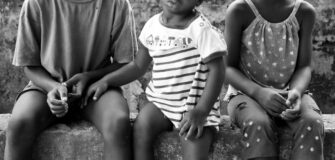Young Australians have identified themselves as a major barrier to inclusion and accessibility for the blind and low-vision community, new research from Guide Dogs NSW has revealed, echoing findings from the Disability Royal Commission around a lack of social connection, integration and education in the community.
Encouragingly the study of 400 Australians aged 18-35 found they are very aware of their knowledge gaps and three in four (75%) are motivated to help improve inclusion, but just don’t know how.
With the Royal Commission identifying a need for a more active presence of diverse people with disability across schooling, employment and communities, the new research revealed just one in three young Australians have ever had any contact with someone with blindness or low vision.
The study informed Guide Dogs NSW’s public awareness campaign ‘For a Boundless World’, which encourages the community to “learn more to change more” addressing the most common questions and breaking stigmas through the voices of young blind and low vision Australians.
Sydney-based Guide Dogs Client Ingrid Barnes is aged 30 has been paired with her Guide Dog Banner since 2019, after being diagnosed with Retinitis Pigmentosa in 2018.
“There is such a frustrating stereotype for people living with blindness and low vision and I like to live in spite of that. Starting with my love for fashion and makeup, people always think I can’t be blind because I’ve done my own makeup and chosen a nice outfit – we can absolutely be disabled and dress well,” said Barnes.
“It’s these kinds of misconceptions that are difficult social barriers to continue to face.”
Barnes shared that in terms of physical barriers, just accessing the world in a confident way is an ongoing challenge she faces daily. From shopping in inaccessible stores with overwhelming colours and displays to experiencing regular taxi refusals, it’s really frustrating because when she is with Banner she doesn’t feel as if she has a disability which is amazing, but bad interactions such as a restaurant refusal reminds her the world isn’t inclusive.
“Ultimately, the world hasn’t been designed for those of us living with low vision and blindness, but it could be.”
More than one million Australians are expected to live with blindness or low vision by 2030, with Indigenous Australians three times more likely to be affected. While more than 60 per cent of people with low vision or blindness are over the age of 65, three in ten are aged 19-64 and one in ten are under the age of 18.
Most young Australians admitted they have no idea how people with blindness and low vision date, socialise in groups, work, travel and parent:
- More than half think people with low vision or blindness find it difficult to date and form relationships (56%), socialise in a group situation (54%) or even work (57%)
- 70% believe it would be difficult to manage parenting
- 67% believe it would be difficult to travel/go on a holiday
Despite their positive intentions, a surprising number of young Australians said they don’t even have the confidence to engage with people with blindness and low vision. The lack of understanding also led the majority of young people to fear vision loss and inadvertently create more barriers that isolated the blind and low-vision community.
“With 75% of people in the blind and low vision community reporting that they experience daily barriers in their life, Guide Dogs NSW/ACT has launched the Boundless campaign to increase awareness and empower young Australians to act on their inclusive instincts through education and connection,” said Dale Cleaver Guide Dogs NSW/ACT CEO.
“What has also been significantly demonstrated throughout this research is an extremely limited understanding among young Australians on the lived experience of the 575,000 Australians currently living with low vision and blindness.”
“We are now at a time where two-thirds of young Australians agree the topic of living with low vision and blindness isn’t being discussed enough within society, we are bringing the conversation front and centre helping to close this knowledge gap and create a more inclusive world designed for those living with low vision and blindness,” Dale added.
Menchie Khairuddin is a writer Deputy Content Manager at Akolade and content producer for Third Sector News. She is passionate about social affairs specifically in mixed, multicultural heritage and not-for-profit organisations.

































































































































































